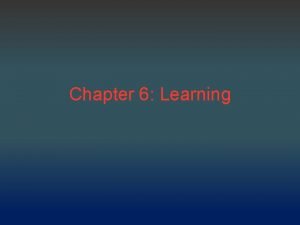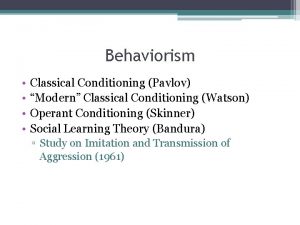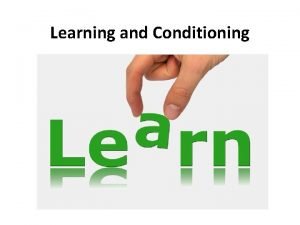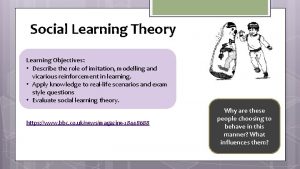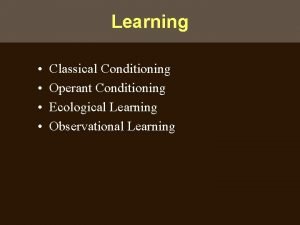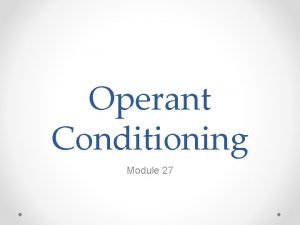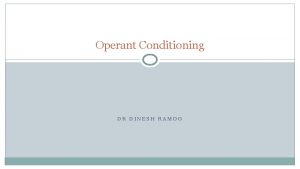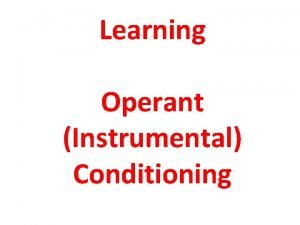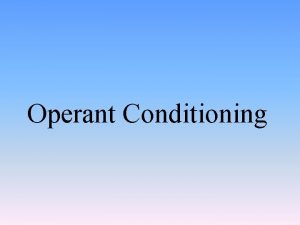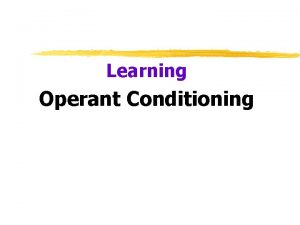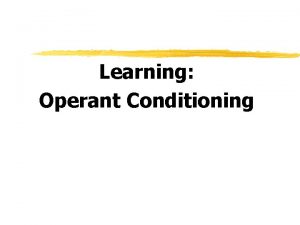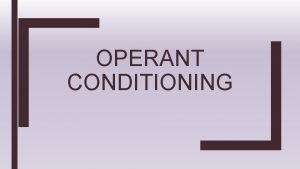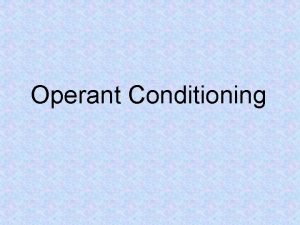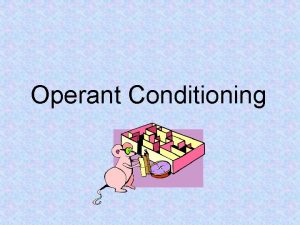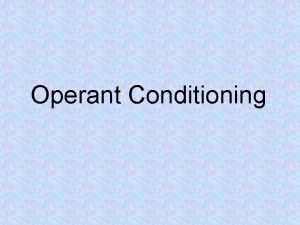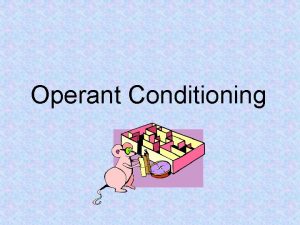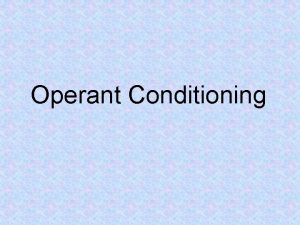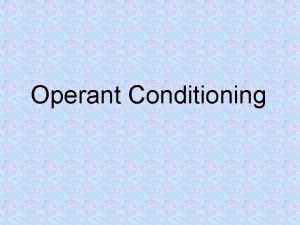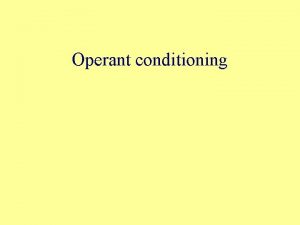Operant Conditioning Operant Conditioning A type of learning















- Slides: 15

Operant Conditioning

Operant Conditioning • A type of learning in which behavior is strengthened if followed by reinforcement or diminished if followed by punishment. REINFORCEMENT PUNISHMENT


Is the organism learning associations between events that it doesn’t control? Classical Conditioning Is the organism learning associations between its behavior and resulting events (punishment or reward)? Operant Conditioning

REINFORCEMENT (increase behavior) PUNISHMENT (decrease behavior) POSITIVE (adding something to the situation) POSITIVE REINFORCEMENT POSITIVE PUNISHMENT NEGATIVE (removing something from the situation) NEGATIVE REINFORCEMENT NEGATIVE PUNISHMENT OPERANT CONDITIONING

Reinforcer • Any event that STRENGTHENS the behavior it follows. Two Types of Reinforcement: Positive and Negative

Positive Reinforcement • STRENGTHENS a behavior by ADDING a stimulus after a response • INCREASING the behavior of doing chores by ADDING money

Positive Reinforcement

Negative Reinforcement • STRENGTHENS a behavior by REMOVING an aversive stimulus. • INCREASING the behavior of smoking by REMOVING the anxiety

Negative Reinforcement

Punishment • An event that DECREASES the behavior that it follows.

Positive Punishment • DECREASES a behavior by ADDING a stimulus after a response. • DECREASING the behavior of misbehaving by ADDING a spanking

Negative Punishment • DECREASES a behavior by REMOVING an aversive stimulus. • DECREASING the behavior of texting by REMOVING the cell phone

Limitations of Punishment • Punishment often only produces temporary suppression • Punishment produces undesirable emotional side effects • Children who are physically punished learn to model or imitate aggressive acts and often become more aggressive in their interactions with others • Punishment NEVER teaches a new behavior

Making Punishment more Effective • Apply punishment immediately • Apply punishment consistently • Apply punishment moderately • Avoid withholding love • Countercondition (reinforce alternative positive behaviors)
 Classical and operant conditioning differences
Classical and operant conditioning differences Operant vs classical conditioning
Operant vs classical conditioning Variable ratio schedule of reinforcement
Variable ratio schedule of reinforcement Classical and operant conditioning
Classical and operant conditioning Classical and operant conditioning.
Classical and operant conditioning. Classical and operant condition
Classical and operant condition Secondary reinforcer
Secondary reinforcer Operant and classical conditioning
Operant and classical conditioning Classical conditioning vs operant conditioning
Classical conditioning vs operant conditioning Operant conditioning classical conditioning
Operant conditioning classical conditioning Social learning objectives
Social learning objectives Partial reinforcement
Partial reinforcement Order of classical conditioning
Order of classical conditioning Operant conditioning
Operant conditioning Puzzle box skinner
Puzzle box skinner Premark principle
Premark principle







